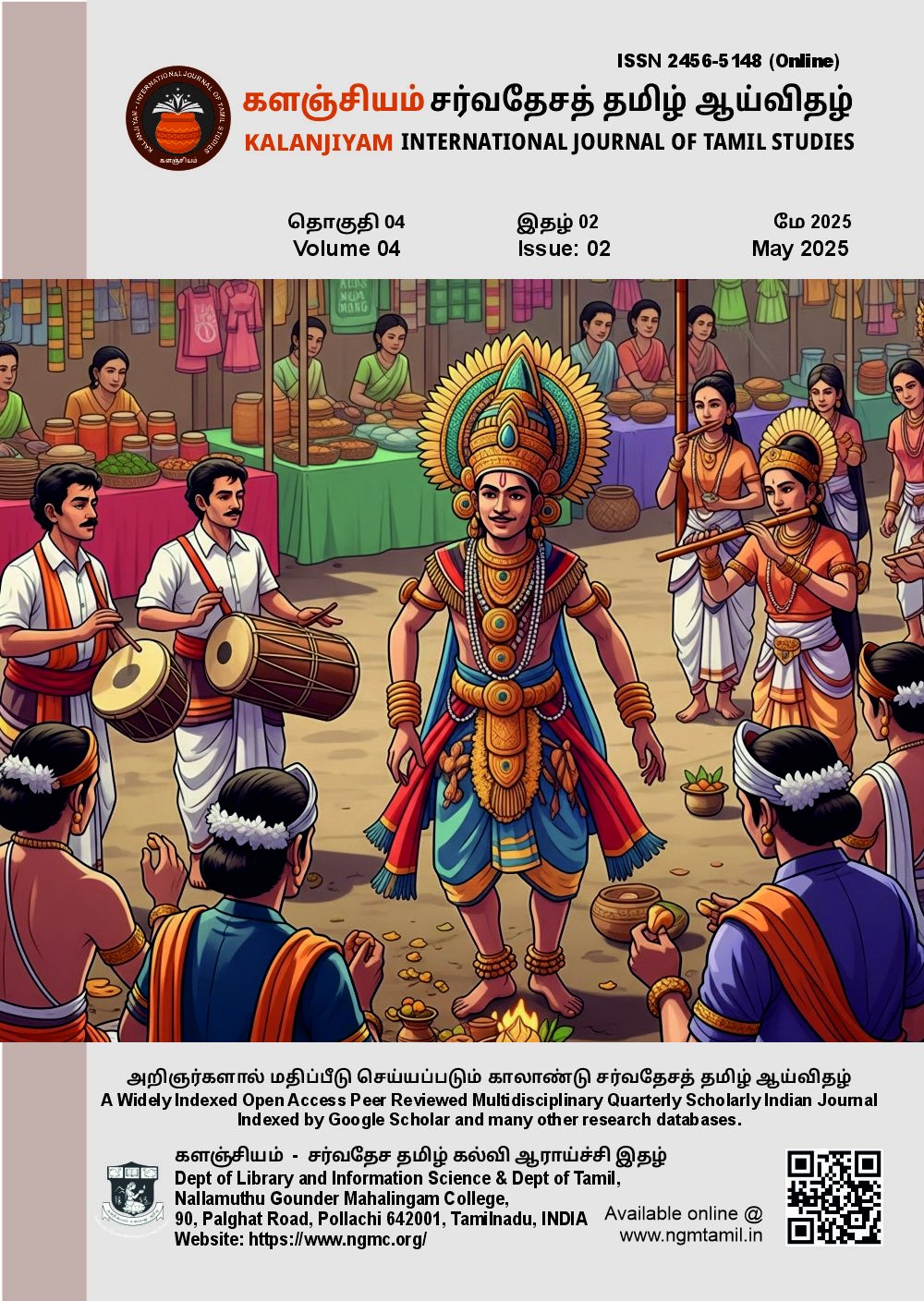சின்ன அரயத்தி புதினத்தில் மலையரையர்களின் சடங்கு முறைகள்
Ritual Practices of the Malayarayars in the Novel "Chinna Arayathi"
DOI:
https://doi.org/10.63300/kijts0405202504Keywords:
Maternity rituals, Child ritualsAbstract
Rituals hold a very important place among cultural identities. They reveal the uniqueness and tradition of a society. Rituals intertwined with various stages of human life are important, such as birth rituals (rituals performed when a child is born), puberty rituals (rituals performed when a girl reaches puberty), marriage rituals (rituals performed during marriage), divorce rituals (rituals performed during divorce), pollution rituals (rituals observed during sad occasions), and death rituals (rituals performed after death). We can learn about how these rituals are performed among tribal people, what their unique characteristics are, and what their social significance is through the novel "Chinna Arayathi." The aim of this study is to explore the role of these rituals in the lives of the Malayarayars and how they reflect their beliefs and lifestyles. Rituals are considered to be the most important cultural symbols. Rituals related to human life include birth rituals, puberty rituals, marriage rituals, divorce rituals, purification rituals, and death rituals. The methods used by these rituals among tribal people are known from the Chinna Arayathi Pudinam.
Downloads
References
1. Narayanan, Kulachal M. Yusuf - Chinna Arayathi, Kalachuvadu Publishing House, K.P. Road, Nagercoil. December - 2010
2. Alphonsa. S. - Beliefs of Mountaineers, Publishing House, Madurai Kamarajar University, Madurai, 1985.
3. Aravanan, K.P. - Tamil People's History, Tamilkottam, Chennai, 2005.
4. Arivudai Nambi, S.K. - Ancient Tamils and Today, Senthamil Publishing House, Mettuvalasu, 2001.
Downloads
Published
Issue
Section
License
Copyright (c) 2025 முனைவர் து.நீலாதேவி (Author)

This work is licensed under a Creative Commons Attribution 4.0 International License.
Our journal adopts CC BY License Creative Commons Attribution 4.0 International License http://Creativecommons.org//license/by/4.0/ . It allows using, reusing, distributing and reproducing of the original work with proper citation.






